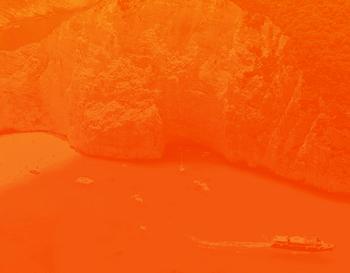Ghar Dalam Cave is a highly important site as it was here that the earliest evidence of human settlement on Malta, some 7,400 years ago, was discovered. What makes the site even more fascinating is that it was in use during World War II, when it served first as an air raid shelter and later as a fuel storage depot.
The display area consists of two parts: the cave; and the museum, which exhibits a remarkable wealth of finds from animal bones to human artefacts. The cave was formed by overlaying river running at right angles to the present-day cave. It is some 144 metres deep, but only the first fifty metres are open to visitors.
The history of the cave and of the Islands can be decoded from Ghar Dalam's stratigraphy. The lowermost layers, more than 500,000 years old, contained the fossil bones of dwarf elephants, hippopotami, micro-mammals and birds. Above the pebble layer that follows, is the so-called 'deer' layer, dated to around 18,000 years ago. The top layer, or 'cultural layer', dates to less than 10,000 years and holds evidence of the first humans on the Island.
The museum was opened to the public in the early 1930s and is a piece of history in its own right. It is a fine example of museum display in the Victorian style. Showcases contain bones of similar size and origin mounted on boards in uniform rows. Teeth are placed in jars or stacked in rows. Everything was designed to impress through its sheer quantity with little regard given to an exhibit's scientific or educational value. The mounted skeletons of a brown bear, baby elephant, baby hippopotamus, deer, wolf and fox all belong to present-day animals and are not from the cave.
A didactic display opened to the public in 2002 covers various aspects of the cave's formation and charts the animal and human finds. It also provides information on the forms of fossil fauna that were present on the Maltese Islands during the Ice Age.
Ghar Dalam also has a small garden of indigenous and exotic plants and trees. Specimens include the native, national plant, Palaeocyanus crassifolius (the Maltese Centaury) and the national tree Tetraclinis articulata (Sandarac Gum Tree). There are also two large specimens of the exotic and locally rare Wigandia caracasana with its thick fleshy leaves and violet blossoms.
The garden acts as home to native lizards and insects such as the slow moving chameleon (Chamaleo chameleon). In summer months, the 'song' of the male cicada (Cicada orni), echoes through the gardens and surrounding valley. Several species of birds such as the Sardinian Warbler (Sylvia melanocephala) also make their home here.
Ghar Dalam is of particular interest to those studying the geological, geomorphological, speleological, palaeontological, archaeological and ecological sciences.


Similar Topics
-
The National Museum of Archaeology Valletta Malta
Posted by Sliema2 in Malta and Gozo Discussion Forum
-
Malta Aviation Museum and Craft Village
Posted by Kiltman HT Mod in Malta and Gozo Discussion Forum
-
aviation museum/ vintage car museum
Posted by del949 in Goa Discussion Forum
-
Harrison's Cave Closure - Barbados
Posted by Crockett in Caribbean Discussion Forum
-
help with war museum
Posted by diane118 in Malta and Gozo Discussion Forum
